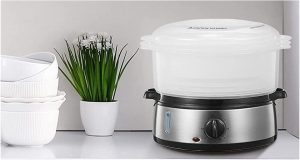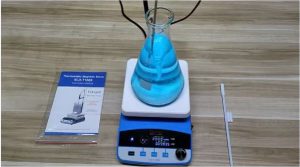The Hidden Risks of Daily Facial Steaming: What You Need to Know
Steaming your face daily can strip your skin of natural oils, leading to dryness, irritation, and even broken capillaries.
Steaming your face can feel amazing, right? It’s like a warm hug for your skin. But, like anything else, too much of a good thing can turn bad. Our skin naturally produces oils to keep itself balanced and healthy. Steaming too often can strip away these essential oils, leaving your skin dry, irritated, and vulnerable.
Have you ever heard of “facial flushing”? That uncomfortable redness can flare up when your blood vessels dilate. While steaming can benefit some skin types, those with sensitive skin or conditions like rosacea might find that daily steaming worsens redness and irritation.
While occasional steaming can be a lovely treat for your skin, daily use might not be the best idea. It’s all about finding that sweet spot where your skin feels pampered but not overwhelmed
Why Steaming Your Face Daily Might Be Harming Your Skin
While facial steaming can offer temporary benefits like opening pores and increasing circulation, daily use may lead to unintended consequences. Over-steaming can strip your skin of its natural oils, essential for maintaining a healthy moisture barrier. This can result in dryness, tightness, and even flakiness. Additionally, the heat from steam can exacerbate existing skin conditions like acne or rosacea, leading to flare-ups and irritation. If you have sensitive skin, daily steaming may be too harsh, causing redness and discomfort. It’s important to listen to your skin and adjust your steaming routine accordingly to avoid these potential drawbacks.

Can Steaming Your Face Trigger Rosacea Flare-Ups?
If you’re prone to rosacea, a skin condition characterized by redness and inflammation, you might want to reconsider daily facial steaming. The heat from the steam can dilate blood vessels, a key trigger for rosacea flare-ups. This can lead to increased redness, flushing, and even the formation of visible blood vessels. While some individuals with rosacea find occasional, gentle steaming beneficial, it’s crucial to monitor your skin’s response and consult a dermatologist for personalized advice. They can help you determine if steaming is suitable for your specific needs and recommend alternative soothing methods.
Is Facial Steaming Safe for Sensitive Skin?
For those with sensitive skin, daily facial steaming can be a risky endeavor. The heat and moisture can disrupt the skin’s delicate balance, leading to irritation, redness, and even burning. Sensitive skin is more prone to reacting to external stimuli, and the intense environment of a steam session can be overwhelming. If you have sensitive skin and are considering facial steaming, it’s best to start with shorter, less frequent sessions and observe how your skin reacts. It’s also wise to consult a dermatologist to discuss whether steaming is appropriate for your skin type and concerns.

How Daily Steaming Can Weaken Your Skin’s Protective Barrier
Your skin’s barrier is its first line of defense against external aggressors like pollution and bacteria. It’s essential for maintaining hydration and preventing irritation. However, excessive steaming can compromise this barrier, making your skin more vulnerable to dryness, sensitivity, and breakouts. The heat and moisture can strip away natural oils and disrupt the delicate balance of lipids that hold the barrier together. If you notice your skin becoming drier, flakier, or more easily irritated after regular steaming, it’s a sign that your skin barrier may be compromised.
The Truth About Steaming and Dehydrated Skin: What You Need to Know
While it might feel like steam is hydrating your skin, the opposite may be true. The heat from the steam can actually increase transepidermal water loss (TEWL), which is the process of water evaporating from your skin. This can lead to dehydration, dryness, and tightness. While the initial moisture from the steam might feel good, it’s not a sustainable way to hydrate your skin. In fact, it can exacerbate dryness in the long run. If you have dry or dehydrated skin, it’s best to limit your steaming sessions and focus on incorporating hydrating products and practices into your skincare routine.
Common Questions and Answers
1. Is Steaming Safe for All Skin Types?
While steaming can be beneficial for some, it’s not suitable for everyone. Individuals with sensitive skin, rosacea, eczema, or other inflammatory conditions should avoid steaming or use it cautiously. The heat can exacerbate these conditions, leading to redness, irritation, and discomfort. It’s always best to consult a dermatologist to determine if steaming is appropriate for your specific skin type and concerns.
2. Can Steaming Help with Acne?
Steaming can temporarily open pores and soften blackheads, making them easier to extract. However, it’s not a long-term solution for acne. It won’t address the underlying causes of acne, such as excess oil production or hormonal imbalances. In fact, excessive steaming can strip the skin of its natural oils, potentially triggering more oil production and breakouts.
3. How Often Should I Steam My Face If I Don’t Have Sensitive Skin?
Even if you don’t have sensitive skin, it’s generally not recommended to steam your face daily. The frequency of steaming depends on your individual skin type and needs. For oily or combination skin, steaming once or twice a week can be beneficial. However, for dry or normal skin, once every two weeks may be sufficient to avoid over-drying and irritation. It’s crucial to listen to your skin and adjust the frequency accordingly.
4. Can Steaming Cause Burns?
If done improperly or excessively, steaming can indeed cause burns. It’s important to maintain a safe distance from the steam source and limit the duration of your steaming session to 5-10 minutes. Avoid steaming if you have any open wounds or sunburns on your face, as the heat can further irritate and damage the skin.
5. Are There Any Alternatives to Steaming for Opening Pores?
Yes, there are several alternatives to steaming that can effectively open pores without the potential drawbacks. Warm compresses, enzyme exfoliators, and gentle cleansing brushes can all help to loosen dirt and debris within the pores. These methods are often gentler on the skin and can be tailored to your specific needs.
Read More: 5 Best Sauna Steamers Reviewed





